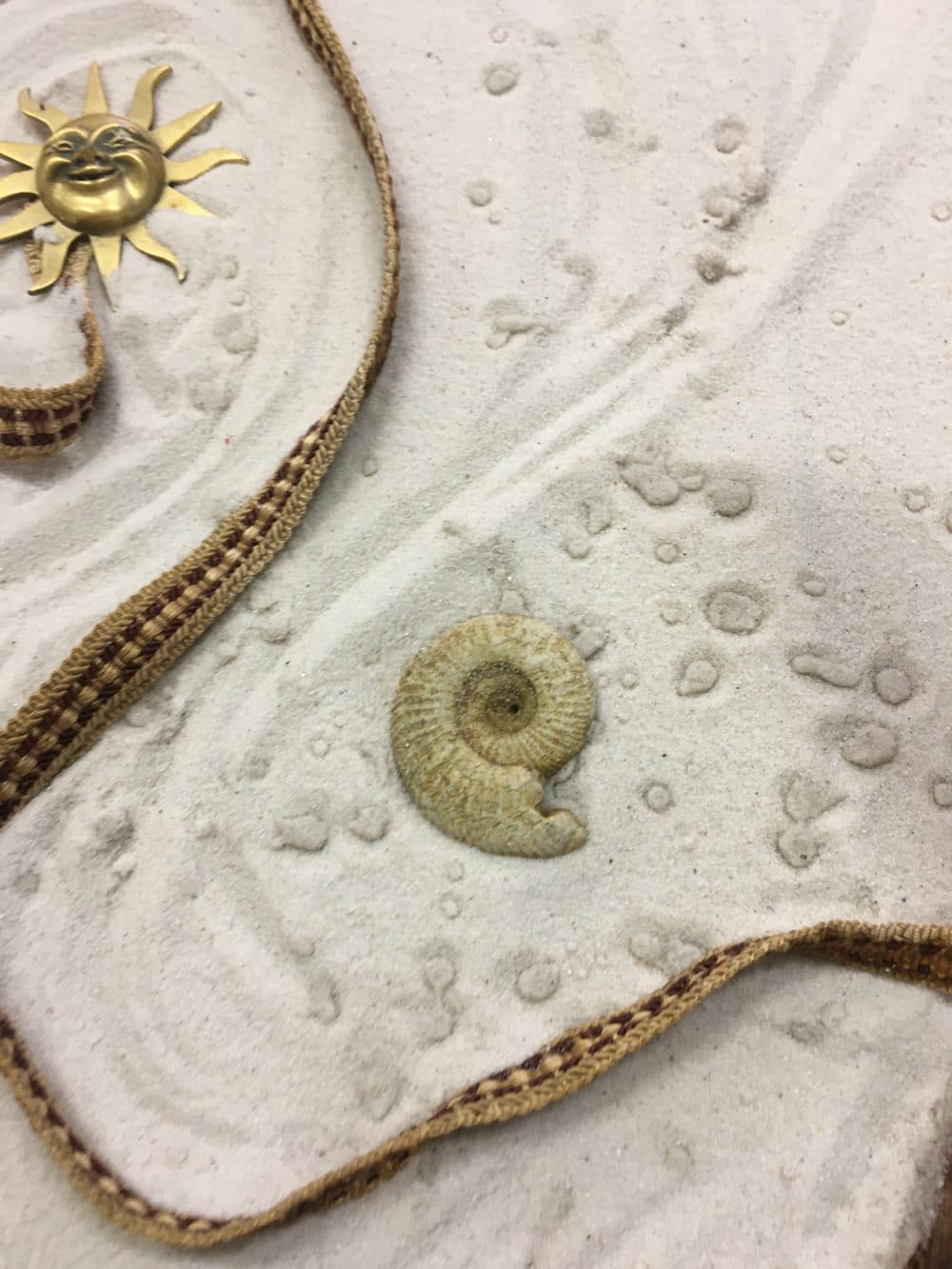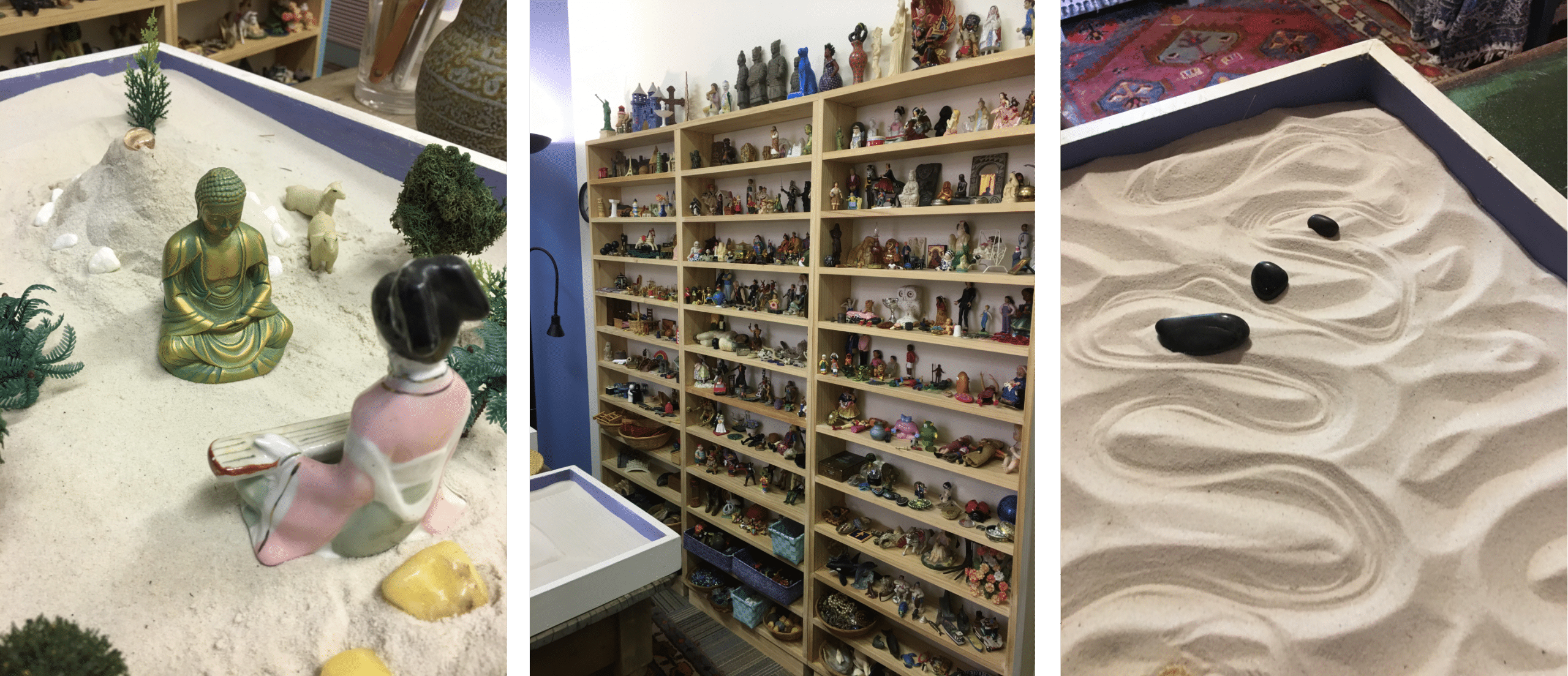 Sandplay Therapy is an active creative form of therapy with a long and distinguished history, developed by Dora Kalff in her home country of Switzerland.
Sandplay Therapy is an active creative form of therapy with a long and distinguished history, developed by Dora Kalff in her home country of Switzerland.
At the time Dora Kalff completed her training as a Jungian Analyst in Zurich, Swiss law changed. Frau Kalff was unexpectedly precluded from registration as an analyst, despite the intervention of her mentor, CG Jung.
Committed to her work, Kalff travelled to London to study with pioneering child psychiatrist and paediatrician Margaret Lowenfeld. Lowenfeld used the basic tools of sandplay in her method: the tray filled with sand along with a limited collection of miniatures, following HG Wells Floor Games. Kalff’s method and therapeutic philosophy differed markedly from Dr. Lowenfeld’s, and the two determined that Lowenfeld would call her work The World Technique, and Kalff’s method would be known as Sandspiel, which translates to Sandplay.
Kalff’s commitment to the ‘safe and protected’ space of the therapeutic relationship, her soulful respect of both Eastern and Western thought and philosophies and her profound respect for the individual psyche resulted in an immediately effective therapy for the children, then adults, with whom she worked.
Sandplay Therapy which is grounded in Jung’s ideas about psychology and symbolism, offers containment and form to the inner psychological world of the client. It facilitates the meeting of conscious with unconscious through image, and activates a powerful form of self-healing and transformation.
The International Society for Sandplay Therapy, (ISST), developed by Dora Kalff is based in Zurich. It defines guidelines for training ensuring that high professional standards are maintained. At the same time it provides an international forum for the exchange of professional experience, literature and research on Sandplay Therapy. Sandplay Therapy is now widely practised throughout the world, especially in Europe, UK, America, Japan and China with a growing community of trained therapists in Australia and New Zealand.
The ‘’free and protected space’, into which the unconscious is welcomed and warmly held by the therapist is central to the process, enabling the clients’ powerful experience. And like Jungian psychotherapy, Sandplay Therapy is a process that is governed by the containing boundaries of stability and commitment as well as by a code of ethics.
The initial session and meeting between the therapist and client is usually the time when the client’s needs are assessed and the protocols of Sandplay Therapy are discussed. Sandplay may also be included within psychotherapy as a single session or a series of sessions.

Sandplay Therapy supports and works at depth with the unconscious processes of the psyche. Some talking is necessary to establish rapport and some context for the work however clients are encouraged to make use of the materials and creative opportunities provided by the therapy room. There is a choice of working with wet or dry sand contained in different trays. There is also the choice to use the miniatures or any of the other materials provided such as art and craft materials and natural materials such as stones or shells.
The therapist’s role is to quietly observe the making of the tray and to document what takes place and this includes photographing the tray before it is dismantled. The detailed documentation is important in the period when the client and therapist work together to explore and integrate the images in the trays. This stage is as important as the creation process. It involves working at depth and making space for the created images to communicate with the conscious personality. It is often a time to reflect on the changes that have occurred already and consolidating those changes by means of conscious reflection.
Sandplay is encouraged as a free expression of purposeful play. There are no hard and fast rules about how to do it except it is not about producing something to be pleasing to the therapist. The guiding principle is to stay attuned to one’s inner subjective experience. It is a practice where the invisible may become visible and the inner person revealed.
Marie Makinson and Heather Lesley Swan
